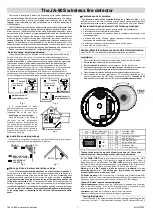
The Teal patient seating range is produced using high quality materials to meet the
specific demands of durability, aesthetics and infection control.
•
Care should be taken to protect patient seating from abrasion and collision damage.
•
Visually inspect the chair daily for damage which would impede normal use.
•
No apparent looseness of the frame joints or seats and backs.
•
Castors are free of debris and the chair rolls straight with no excessive drag to one side
Patient
+
Seating
Call 0800 9808998 | teal.co.uk
v1/21
Operation
In normal use the chair is stable, but if the user’s
weight is applied to one side by leaning out or
backwards on two legs the centre of gravity may
change and stability may be reduced. Similarly, if
additional weight or force is applied by care staff when
the chair is occupied stability may be reduced.
•
Users must not sit on the chair arms
•
The chair must be placed on a flat level surface
•
The chair is not approved for hand propulsion or
to be used as a portering chair
•
Following purchase it is recommended that
supervisory staff are trained, so that correct
positioning is maintained.
•
Advice should be sought from a qualified
healthcare professional and/or Teal representative
at initial prescription of the chair.
•
Users who can enter and exit the chair unaided
may require little instruction or assistance.
Those dependent on a supervisor may require
assistance in entering or assisting to a standing
position.
Safety
Users should exercise reasonable care.
Positioning
•
Do not place too close to a wall, heat source
or other object that may be contacted when in
operation. Position on a flat, level surface
.
Moving
•
Ensure all brakes are released.
•
Only move on a flat, level surface.
Operation
•
Consider the patients posture
•
If moving with housekeeping wheels or castors
always ensure chair is unoccupied.
DO NOT
sit on the arms. Do not push into or over a
raised threshold.
operation
+
maintenance
Call 0800 9808998 | teal.co.uk
v1/21























